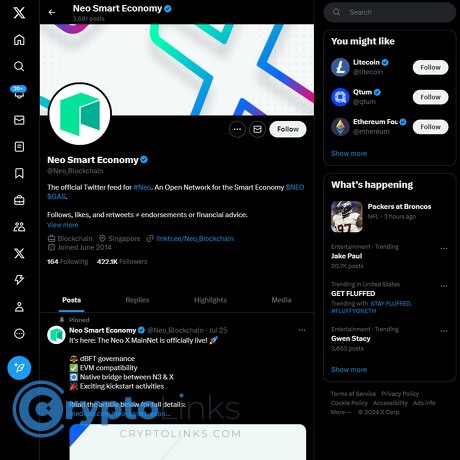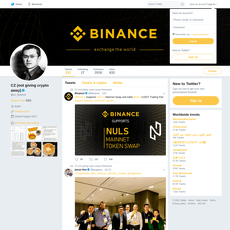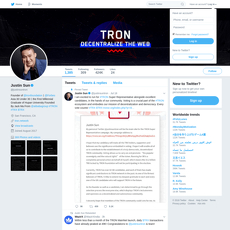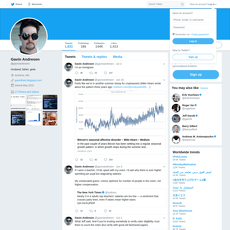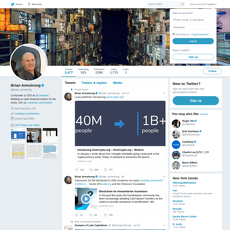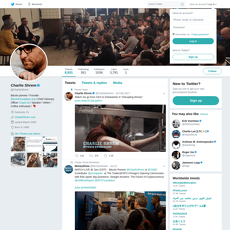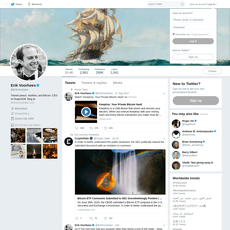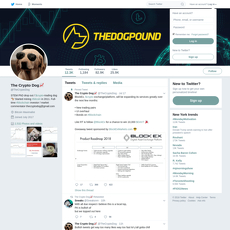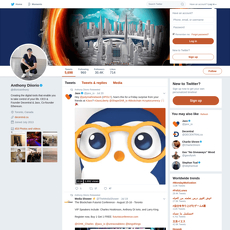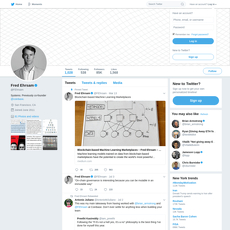Neo Smart Economy Review
Neo Smart Economy
x.com
Neo Smart Economy Review Guide (2025): What You Need to Know + Live Updates from Neo’s X account
Is Neo’s “Smart Economy” still worth your attention in 2025, or is it just a throwback from the last cycle? If you’ve heard mixed takes—some hyped, some harsh—you’re not alone. I’m going to cut through the noise, keep it practical, and point you to the one official source you should follow for real-time updates: Neo’s X account.
I’ll keep this guide honest and useful for both beginners and builders. Expect clear explanations of how NEO and GAS work together, what changed with Neo N3, who’s actually steering the ship, and how to track price and progress without getting trapped by clickbait predictions.
Quick tip: If you only follow one channel for Neo news, make it @Neo_Blockchain. You’ll catch core releases, ecosystem highlights, and event threads in real time.
Where people get stuck with Neo
Neo has been around long enough to pick up myths, half-truths, and outdated comparisons. Here’s where most people trip up:
- NEO vs GAS confusion: Many assume NEO is the “coin you spend,” then wonder why fees look different. The two-token model is by design (more on that soon), and it changes how you think about holding vs. transacting.
- Governance questions: Who actually makes decisions? How much influence do token holders have vs. foundations or node operators?
- What changed with Neo N3: Plenty of older articles still talk about Neo like it’s 2018. N3 tightened the VM, added oracles, improved tooling, and refined the economics—but many readers still see the pre-N3 picture.
- “Big in China” vs. “Neo is dead” claims: The truth sits between the extremes. Hype cycles fade, but shipping tech and active builders matter. That’s what I’ll help you check.
To ground this, I’ve watched how users actually interact with the ecosystem—simple things like claiming GAS in a wallet or making a small contract call. Little tasks reveal the UX, not just the theory. And when I track sentiment, I weigh it against on-chain activity and developer updates rather than headlines. That combination tends to beat gut feel in crypto.
What I’ll deliver in this guide
- A clean explanation of Neo’s core tech and why the “Smart Economy” idea still matters in 2025
- Who’s behind Neo (founders, foundation, node voters) and how decisions are made
- How the NEO and GAS tokens actually work in the real world (fees, rewards, and common mistakes)
- Where to check live price, market cap, and credible forecasts without relying on stale screenshots
- A practical, safe way to get started—wallet picks, basic checks, and links to official resources
I’ll avoid fluffy predictions and surface the data points that matter: developer traction, governance health, and the actual apps that keep users coming back. If I can’t justify a claim with a clear source or a reproducible check, I won’t lean on it.
Who this guide is for
- Curious investors who want signal over noise and a realistic view of risk vs. potential
- Builders comparing smart contract platforms who care about finality, languages, and tooling
- Busy crypto users who just want the essentials and the official links to stay updated
If you prefer to skim and verify fast, you’ll appreciate the structure. I’ll point to the official docs and the Neo X account so you can confirm anything yourself, anytime.
Ready to get a clear picture of what Neo’s “Smart Economy” actually aims to build—and why identity, assets, and contracts are part of the same story? In the next section, I’ll unpack the vision, the founders, and where Neo sits in the market today so you can judge it on 2025 facts, not 2017 memories. Want the short version first or the full story?
Neo at a glance: vision, origins, and the “Smart Economy” idea
If you’ve ever wanted crypto that feels closer to “real-world usable” than pure speculation, Neo’s original promise will click. It wasn’t pitched as just another chain; it was pitched as a place where compliant apps could actually thrive—where identity, assets, and code work together without drama.
“Smart Economy = digital assets + digital identity + smart contracts.” — a line Neo has repeated for years because it still sets the tone for everything they build.
The vision behind Neo: digital assets + digital identity + smart contracts
Neo’s big idea is simple and bold: make it normal for businesses and users to transact with programmable assets under real rules, not just crypto-native vibes. That means you should be able to:
- Represent assets digitally (equities, loyalty points, in-game items) with transparent on-chain logic.
- Use identity when it matters (KYC, roles, access control) via verifiable credentials and standards that can meet policy needs.
- Automate with smart contracts so agreements execute exactly as written, instantly and globally.
Why does this blend matter? Because institutions, cities, and serious consumer apps can’t ship on vibes alone. They need compliance hooks and finality that stands up to audits. Reports from groups like the World Economic Forum and OECD keep underlining the same point: digital identity is critical infrastructure for mainstream digital assets. Neo built with that future in mind before it was trendy.
A few practical examples of what this enables:
- Regulated tokenization with allowlists/role-based logic inside smart contracts.
- Consumer apps that want “sign-in with credentials” plus instant settlement without custodians.
- Gaming + NFTs where provenance and creator verification matter more than hype cycles.
It’s an opinionated path: not every project needs identity, but big categories of finance, commerce, and public services absolutely do. That’s the lane Neo tries to own.
Founders and ownership: Da Hongfei, Erik Zhang, OnChain, and the Neo Foundation
Neo started life as Antshares (2014) and rebranded to Neo in 2017. The founders, Da Hongfei and Erik Zhang, also created OnChain, a separate company focused on enterprise-grade blockchain solutions. Their public-chain efforts run through the Neo Foundation and its development arm often referred to as Neo Global Development (NGD).
Here’s the governance and ownership picture in plain terms:
- Public, permissionless network: anyone can use it; consensus nodes are elected through on-chain governance.
- Neo Foundation: stewards core development, ecosystem growth, partnerships, and treasury strategy.
- Founders, not “owners” of the chain: they set direction and fund progress, but the network runs by rules, code, and voters—not a company’s switch.
This split—public chain for the world, enterprise know-how from OnChain—lets Neo court both builders who want open infrastructure and organizations that need comfort around standards, audits, and compliance conversations.
Official updates on X
If you only follow one channel for what’s shipping right now, make it the official X account. You’ll see:
- Release notes and network upgrade timelines.
- Grant and accelerator announcements for teams building on Neo.
- Ecosystem spotlights (DeFi, NFTs, gaming, identity pilots).
- Event schedules and talks where core contributors present roadmaps.
Turn on notifications if you care about staying early. Also, when you’re checking contract addresses or dApp links, cross-reference posts from that account—saves you from a lot of phishing headaches.
Where Neo sits in the market today
Neo is a mature L1 with a clear angle: finality-first consensus and multi-language smart contracts that don’t force developers to learn a new language. It stands shoulder-to-shoulder with platforms like Ethereum, Algorand, Avalanche, and others, but keeps a distinctive “enterprise-capable” flavor that some chains avoid.
What that looks like in the wild:
- DeFi and swaps through projects such as Flamingo Finance, showing that on-chain liquidity is alive on Neo.
- NFTs and creator tools with marketplaces like GhostMarket supporting Neo assets alongside other chains.
- Identity-friendly designs that make sense if you’re building for compliance-heavy sectors or consumer apps that need guardrails.
If your checklist includes fast, irreversible finality, native support for multiple programming languages (C#, Python, Go, Java, and more), and room for identity-driven use cases, Neo belongs on your radar. If you’re aiming for maximal decentralization at all costs or cutting-edge speed records regardless of trade-offs, you may compare it differently against newer high-throughput chains.
I’ll keep this real: narratives come and go, but the engineering bet here is consistent—make it easy for serious apps to exist in the open. That’s why some teams quietly pick Neo even when it’s not the loudest ticker on your feed.
So where does this leave you if you’re curious about using the network yourself? The next step is understanding what actually makes it tick—its tokens, how finality works under the hood, and the core components that make building feel familiar. Want the no-nonsense version of NEO vs GAS and why consensus design matters for your app or your wallet?
How Neo works: tokens, consensus, and core components
If you’ve ever wondered why Neo uses two tokens, why transactions feel “done” the moment they land, or how N3 quietly fixed a lot of developer pain, this is the no-BS explainer I wish I had years ago.
“Speed without certainty is noise; certainty without speed is bureaucracy.”
NEO vs GAS: why two tokens exist
Neo separates power from fuel. That’s the simplest way to think about it.
- NEO is your governance and staking-style asset. It represents your voice on the network. You keep NEO to vote for consensus nodes and policies, and that participation entitles you to a share of GAS distribution.
- GAS is the transaction and smart contract fee token. It covers transfers, contract deploys, contract calls—everything that consumes network resources.
In practice:
- Hold NEO in an N3-ready wallet.
- Cast your vote for a consensus node/council candidate to align with the network’s incentives.
- Accrue GAS over time based on your NEO and voting; then spend GAS on transactions and contract usage.
The benefit is obvious once you feel it. You don’t have to keep selling your “main” token just to interact with the chain. Your activity budget (GAS) is separate from your network stake (NEO). That design reduces friction for builders and long-term holders—especially when fee markets get noisy elsewhere.
Quick example: I can hold 1,000 NEO for voting and still deploy an NFT contract using GAS I’ve accrued—no need to liquidate the NEO that underpins my governance rights.
dBFT consensus: fast finality for enterprise use
Neo’s consensus, Delegated Byzantine Fault Tolerance (dBFT), is built for quick, irreversible finality. Instead of waiting through multiple confirmations hoping a block won’t get reorganized, a dBFT-committed block is final when it’s produced. For anything compliance-heavy—finance, identity, supply chain—that certainty is a lifeline.
- Immediate finality: Once the network’s elected consensus nodes agree on a block, it’s considered final. No probabilistic games, no “wait N confirmations.”
- Byzantine fault tolerance: As long as a supermajority of consensus nodes are honest and online, the chain progresses reliably.
- Business-friendly performance: Predictable commit times and no reorg headaches make it easier to build real-world workflows.
If you want to get nerdy, there’s a rich body of research on BFT-style protocols used in modern chains and distributed systems. It’s the same family of ideas that underpins data-center-grade consensus designs. For a backgrounder, see the BFT research such as HotStuff (not Neo-specific but a clean primer on finality-first thinking). Neo’s own dBFT iterations (sometimes called dBFT 2.0) focused on liveness and stability improvements during adverse conditions, which is exactly what you want when real money and real users are involved.
The N3 upgrade: NeoVM, oracles, and NeoFS
Neo N3 wasn’t just a version bump; it shipped a tighter core and the “batteries included” stack that developers constantly ask for.
- NeoVM: A lean, deterministic virtual machine made to be compiler-friendly. It’s efficient for contract execution and avoids the bloat that can make other VMs feel heavy. The goal: keep gas costs predictable and performance solid.
- Built-in Oracles: Contracts can request off-chain data (e.g., HTTPS APIs) and receive cryptographically signed responses from oracle nodes at the protocol level. That cuts out a lot of custom, brittle oracle glue. Example use cases:
- Fetch an external price, then settle a DeFi position on-chain with finality.
- Pull game state or metadata from a verified web API mid-transaction.
- NeoFS: Native decentralized object storage integrated with the network. Store large files, media, or datasets off-chain, pay with GAS, and reference them from smart contracts. It’s ideal for:
- NFT media and bundles without trusting centralized storage.
- Data-heavy apps (docs, game assets, KYC artifacts) that need verifiable availability.
Access gateways and docs: fs.neo.org
Put together, you get a clean contract engine, first-class external data, and storage that actually fits real content—not just hashes. That’s the “Smart Economy” stack many teams expect in 2025.
Developer experience: multiple languages, familiar tools
You don’t have to relearn everything to build on Neo. That’s one of the biggest unlocks.
- Write contracts in languages you already know:
- C# via the Neon compiler
- Python via neo3-boa
- Java via neow3j
- Go via neo-go
- JavaScript/TypeScript for front-ends with neon-js
- Use standard tooling: Package managers, IDEs, debuggers—work with your normal stack and wire up NeoVM compile/deploy steps.
- Local iteration is fast: Spin up a local node, test on testnet, and push to mainnet when ready. Official docs: developers.neo.org and repos: github.com/neo-project.
What this feels like for a builder:
- Prototype in the language you already master.
- Use oracles to pull external data without sidecars or duct tape.
- Store your heavy assets in NeoFS while keeping on-chain state minimal and fast.
- Pay predictable fees in GAS and never burn your governance weight in NEO just to ship.
There’s a reason multi-language support keeps showing up as a top factor in developer surveys: it removes the “convert the team” tax and speeds up time-to-first-contract. If your org is already fluent in C#, Python, or Java, you can get to “hello, mainnet” quicker than you might expect.
So now that you know how Neo’s engine runs—two tokens, finality-first consensus, and an N3 stack with oracles and storage—how do you actually put it to work? Curious which wallets make GAS management painless, where the active DeFi and NFT action lives, and how to participate in governance without getting wrecked? Let’s explore that next.
Ecosystem, tooling, and ways you might actually use Neo
I like chains that help you actually do things, not just read whitepapers. Neo is one of the few L1s where a normal user can set up a wallet, earn GAS, try a DEX, mint an NFT, or store files on-chain-adjacent storage in a single afternoon. That’s the promise of a “smart economy” you can touch.
“Your keys, your coins.” — the simplest rule that still saves the most money.
Wallets and custody basics
Pick tools that are N3-ready, show your GAS clearly, and work with hardware wallets. These are the ones I see most often in the wild:
- Neon Wallet (desktop/web) — clean, N3-native, supports Ledger. Link: neon.coz.io
- NeoLine (browser/mobile) — good for dApps via its dAPI; easy to connect to DeFi and NFT sites. Link: neoline.io
- Hardware — Ledger Nano S/X works with N3 through compatible wallets like Neon. Use it if you’re holding more than lunch money.
Smart setup flow I recommend:
- Create a new N3 wallet and write your seed phrase offline. No screenshots. No cloud drives.
- Enable hardware wallet support if your balance or heart rate warrants it.
- Send a tiny test from your exchange to your new wallet first. Only scale after the test lands.
- Confirm you can see NEO and GAS. On N3, GAS accrues automatically to NEO holders; some wallets show “claimable” GAS and auto-claim when you transact.
Two quick sanity checks:
- Install wallet extensions from the official site only. Fake extensions are rampant.
- Bookmark your wallet’s URL and the official docs. Don’t Google-and-click when money’s on the line.
DeFi, NFTs, and gaming on Neo
Neo’s app layer isn’t the noisiest in crypto, but it’s quietly useful. If you like trying products that run fast and don’t fight you on setup, this is where it gets fun.
DeFi
- Flamingo Finance — the flagship DEX and liquidity hub on Neo. Swap NEP-17 tokens, provide liquidity, and track portfolio performance in one place. Link: flamingo.finance
- How to start:
- Connect Neon or NeoLine to Flamingo, confirm you’re on N3 MainNet.
- Use small sizes first. If you provide liquidity, remember impermanent loss is real. Read each pool’s parameters and rewards.
- Prefer assets that are native or well-bridged with clear audit history. If a token’s origin is fuzzy, skip it.
NFTs and digital creativity
- Standards — NEP-11 (NFT) and NEP-17 (fungible) form the backbone. Most marketplaces support them out of the box.
- GhostMarket — multi-chain marketplace with strong Neo support, creator royalties, and verified collections. Link: ghostmarket.io
- MegaOasis — curated art drops and exhibitions on Neo. Link: megaoasis.io
- Practical tip — store your media on NeoFS or another durable storage layer; URLs that rely on centralized servers can disappear. Many creators on Neo now default to decentralized storage for longevity.
Gaming and identity-flavored apps
- Neo’s focus on finality and multi-language smart contracts makes it friendly for web games and apps that need quick, irreversible outcomes.
- Look for titles and tools that integrate NeoLine dAPI so the game can talk to your wallet seamlessly. It’s the difference between “ugh” and “ok that was easy.”
- Curious where new launches show up? Track ecosystem highlights via the official X account and explorers like Dora by COZ to see contracts and activity.
One more reason builders favor Neo’s app layer: industry reports like Electric Capital’s annual developer study suggest ecosystems that support popular languages onboard developers faster. Neo’s “use the language you already know” approach fits that reality.
Governance and participation
Holding NEO isn’t passive. You can influence who runs the network and how it evolves.
- Voting — Use your wallet to vote for consensus/committee candidates. Your choices help secure the chain and keep policy honest.
- Incentives — You hold NEO for governance and to accrue GAS. Some interfaces show voting power and candidate info so you can choose with context.
- How to get involved:
- Open a supported wallet (Neon/NeoLine), go to the governance or voting section.
- Review candidate details (track record, uptime, team). Well-known teams in the Neo world include groups like COZ, Neo SPCC, and others that maintain critical infrastructure.
- Cast or adjust your vote as conditions change. It’s set-and-forget only if you don’t care who’s steering the ship.
Good governance is a quiet moat. If you’ve ever lived through a chaotic upgrade on another chain, you know why this matters.
Builders’ corner: docs, SDKs, testnets
Neo’s developer path is straightforward: pick your language, bootstrap a local chain or testnet, then add oracles and NeoFS if your app needs data and storage. Here are the resources I actually see used:
- Docs — start here for setup, standards, and node/testnet details: docs.neo.org
- SDKs and devpacks:
- .NET/C# — Neo .NET DevPack (official)
- Java/Kotlin — neow3j by AxLabs
- Python — neo3-boa by COZ
- Go — neo-go by Neo SPCC
- JavaScript/TypeScript — neon-js by COZ
- Local dev and testing:
- Run a private chain with Neo Express for fast loops.
- Use TestNet before MainNet. Grab test GAS from the faucet linked in the docs or the Dora explorer. Never reuse MainNet keys on test networks.
- Explore contracts, transactions, and governance on Dora. It’s an easy way to “see” your app’s footprint.
- Built-in oracles:
- Call HTTP(S) APIs from on-chain code without spinning up your own oracle network. Great for price feeds, compliance checks, or Web2 data taps.
- Plan for timeouts, costs, and fallbacks. Treat external data like a dependency: fail gracefully.
- NeoFS (decentralized storage):
- Store NFT media, game assets, and app data on a content-addressed network run by storage nodes. Managed by the Neo SPCC team. Link: neospcc.io
- Use S3-compatible gateways for familiar tooling, pay with GAS, and combine with access control for private or tiered content.
One builder’s pattern I love: contracts for logic, oracles for context, NeoFS for heavy data. It keeps your on-chain footprint lean while still delivering rich app experiences.
If you’re thinking, “This is great, but how does any of it tie back to price, future potential, or whether it’s worth allocating capital?” — that’s exactly where we’re headed next. Ready for the unfiltered take on value, momentum, and risk in plain English?
Price, future, and investing: the questions everyone asks
How much is NEO worth right now?
Prices move fast—don’t trust screenshots. For the real-time NEO price, market cap, and volume, use:
- CoinMarketCap: NEO — add it to your watchlist for alerts
- Your exchange app — faster for intraday moves and order book depth
- Neo Explorer — to cross‑check on-chain activity, transactions, and addresses
If you’re sanity-checking trends, remember NEO’s historical peaks (for context only): a blow-off top during early 2018 and another spike in 2021. Treat history as perspective, not a promise. Always verify current numbers on CMC or your exchange.
Does NEO coin have a future?
Short answer: it can — if usage keeps building. Neo keeps shipping (N3, built-in oracles, NeoFS) and leans into multi-language smart contracts and fast finality via dBFT. The long game depends on three things that actually move the needle:
- Active builders: Check neo-project on GitHub for commits, issues, and releases. Look for shipped code, not just roadmaps.
- dApp traction: Watch real usage for known apps (for example, Flamingo for DeFi and GhostMarket for NFTs on Neo). Follow volumes, unique users, and updates.
- Governance quality: Node diversity, voter participation, and transparent proposals. Healthy governance sustains upgrades and confidence.
Industry-wide developer studies like Electric Capital’s Developer Report show attention concentrating on a few large ecosystems. That’s the reality. Use it as a backdrop while you track Neo’s own repos, SDK downloads, and weekly user counts to judge momentum with your own eyes.
"In crypto, conviction is earned, not borrowed."
Is NEO worth investing in?
It can be a high-variance bet. Here’s my clean, no-drama view:
- Pros
- Clear governance model and fast finality (dBFT) for regulated or enterprise use
- Multi-language dev (C#, Python, Go, Java, and more) — low friction for teams
- N3 features baked in: oracles and NeoFS storage reduce third-party dependencies
- NEO + GAS design: holding NEO can generate GAS used for on-chain actions
- Cons
- Fierce L1 competition for builders and liquidity
- Mixed historical traction and narrative whiplash
- Adoption risk if real-world use and partnerships don’t translate into on-chain usage
Practical risk habits that have saved me more than once:
- Size positions like they can go to zero; many treat high-risk coins as 1–3% of a portfolio per position
- Avoid chasing green candles; use DCA if you must, and define what invalidates your thesis
- Custody basics: withdraw to your wallet and understand how GAS is earned/spent before you scale
This is not financial advice. You’re trading your own emotions as much as the market. If you can’t sleep, you sized it wrong.
Who owns NEO crypto?
Neo was founded by Da Hongfei and Erik Zhang. The Neo Foundation supports development and partnerships, while the network itself is public and runs through consensus nodes with community voting. The token model uses a fixed supply of 100M NEO and a separate GAS token for fees.
Where to check forecasts and sentiment
Forecasts are only as good as their assumptions, so treat them as scenarios, not promises. I use:
- Coinbase NEO price page — for a mainstream read and market context
- CoinMarketCap and CoinGecko — neutral aggregators with historical charts and markets
- LunarCrush — social/activity sentiment to spot narrative heat
- Google Trends: NEO crypto — retail interest proxy
- Santiment — on-chain/social analytics (useful for context, even if you don’t trade on it)
When you see a single-number “price target,” ask: what’s the timeline, what’s the catalyst, and what breaks the model?
If you’re thinking “Okay, so how do I actually set this up right and not get burned?” — great question. Next, I’ll show you exactly how to pick an N3-ready wallet, back it up, get NEO, and make your first on-chain action while earning GAS — step by step.
Getting started safely: a simple playbook
Step 1: Pick your wallet and back it up
I run a tight 15‑minute setup for new chains, and it works great on Neo N3:
- Choose an N3‑ready wallet: I like Neon Wallet for desktop and NeoLine for browser/mobile. Both support N3 and show your GAS balance clearly.
- Enable hardware support: If you own a Ledger, connect it inside Neon or NeoLine. Your keys stay offline while you sign on-chain actions.
- Create, then back up your seed phrase: Write it on paper (or metal), store it in two separate places, and never type it into websites or chats. Consider a “dummy” phrase practice run to train your muscle memory before creating the real one.
- Use a watch‑only setup for daily checks: Add your public address to a watch‑only wallet on your phone so you can see balances without exposing keys.
Pro tip: If your wallet shows a QR with your seed phrase anywhere in the UI, you’re in the wrong app. Re‑download from the official source only.
Step 2: Get NEO and understand GAS
Here’s the cleanest workflow I use to avoid headaches:
- Buy NEO on a reputable exchange using spot (no leverage). Enable 2FA before withdrawing anything.
- Withdraw to your own N3 wallet address. Pick the “NEO (N3)” or “Neo network” option when available. Start with a tiny test (for example, 1 NEO) to confirm it arrives.
- Learn the two‑token model: NEO is for governance/voting; GAS pays fees for transactions and smart contracts. Fees are typically low, so a small GAS balance goes a long way.
- About earning GAS: Voting your NEO can enable on‑chain GAS rewards on N3. Some wallets show “stake” or “vote,” but your NEO usually stays liquid. Check the wallet’s info panel to see your claimable GAS and distribution rules.
- Claiming: Many wallets have a “Claim GAS” button. Try it once with a tiny amount so you understand how it works before you need it.
Keep a little extra GAS in your wallet so you never get stuck and can always send or vote when you need to.
Step 3: Explore dApps, staking, and voting
I always run a “micro‑pilot” before committing more funds:
- Start small: Do a $5–$20 transaction first—send tokens between your own addresses, claim GAS, or try a basic swap in a known DeFi app on Neo.
- Voting ≈ staking UI: When you “stake” in many N3 wallets, you’re usually casting a vote for consensus nodes. Read the node info, fee policies, and expected rewards. You can typically change votes any time.
- Try a simple DeFi action: For example, provide a tiny bit of liquidity or do a single swap. Confirm the contract address from official sources before you click anything.
- NFTs and gaming: If you mint or trade, check daily activity and marketplace reputation. Low volume + no audits = proceed with caution.
Rule I live by: “Touch the hot stove with one finger first.” If the dApp UX or permissions feel off, I pull back immediately.
Risk checks you shouldn’t skip
- Verify the app: Go from the official Neo X account’s link tree to dApps or docs to avoid typosquats and look‑alikes. Official updates: https://x.com/Neo_Blockchain
- Confirm contract addresses: Use the explorer linked from Neo’s official docs or the project’s GitHub. Match contract hashes, not just names or logos.
- Check permissions and upgrades: If a contract is upgradeable or has powerful admin keys, you’re taking extra trust risk. Look for audits and transparent governance.
- Avoid “infinite approvals” by default: Approve only what you need and revoke unused allowances regularly.
- Beware of wrapped assets: If you see NEO or GAS on other chains, make sure it’s the bridge you intend to use. Bridge risk is different from native transfers.
- Scams and phishing: No support rep will ask for your seed phrase. Bookmark your wallet and dApps; don’t Google them each time.
Extra resources I like
- Live data: CoinMarketCap’s NEO page for price, market cap, and supply details.
- Founders/background: Easy Crypto’s Neo explainer for a clean overview of origins and design.
- Scenario thinking: Coinbase’s NEO page to gauge sentiment and long‑horizon scenarios.
- Market takes: SwapSpace’s NEO overview to compare narratives across markets.
Want to know the exact signals I watch before I scale up—plus the red flags that make me step away? That’s next…
Neo Smart Economy FAQ and what I’d watch next
Quick answers to top questions
- Does NEO have a future? Yes—if builder activity and real dApp usage keep climbing on N3 and governance stays aligned. The tech is there; the question is execution and adoption. I watch GitHub activity, new contracts, and weekly users to gauge that trend.
- How much is NEO worth? Price changes fast. Check the live feed on CoinMarketCap. Bookmark it instead of relying on screenshots in posts.
- Is NEO worth investing in? Only if you treat it like a high-variance L1 exposure with proper risk controls. My approach: small sizing, clear thesis, time horizon, and strict stop-loss rules. This is not financial advice.
- Who owns NEO crypto? Neo was founded by Da Hongfei and Erik Zhang. The Neo Foundation supports the ecosystem; the chain itself is public, and token holders participate in governance.
Signals I’m tracking
I’m not here for headlines; I’m here for evidence. Here’s what I actually watch and where:
Developer momentum
I check commits, issues, and releases in core and SDK repos. A few starting points:- neo-project/neo (core)
- neo-project/neo-modules (nodes/modules)
- neo-project/neo-vm (VM)
- nspcc-dev/neo-go (Go implementation)
- neow3j/neow3j (Java/Android tooling)
Studies like Electric Capital’s Developer Report have shown that ecosystems which retain senior devs through bear markets tend to win the next cycle. I look for consistent contributors, not just hackathon spikes.
On-chain activity
Contracts deployed, active wallets, and fee-generating usage. For neutral links and official tooling, start at neo.org and the docs. If daily transactions tick up alongside unique contracts and GAS consumption, that’s a healthy sign.
Governance and node diversity
dBFT shines when governance is transparent and diverse. I look at:- How many voters participate and how often
- Which entities run consensus nodes and how balanced they are
- Whether proposals map to shipped upgrades
The goal: fewer single points of failure and a community that shows up when voting matters.
Real products live in production
Announcements are easy; delivery is hard. I track whether apps are shipping, updating, and retaining users. For example:- Flamingo Finance for DeFi liquidity and swaps
- GhostMarket for multi-chain NFTs (Neo support historically included)
- NeoFS integrations when apps need decentralized storage
I look for audits, transparent teams, and obvious product iteration.
Liquidity and listings
Deep order books help users and builders. I check market pairs on CEX/DEX, spreads, and slippage on major trades. You can scan pairs on CMC’s “Markets” tab for NEO to see where the depth really is.
Ecosystem communications
Consistent, verifiable updates matter. I keep Neo’s official X account on alerts for releases, governance notes, and events. Then I verify by checking repos and dApp updates.
Final take and next steps
My view: Neo is a serious L1 with real engineering (dBFT finality, N3 improvements, built-in oracles, and NeoFS). If you value predictable finality and multi-language dev tooling, it’s worth keeping on your shortlist—provided adoption keeps pace.
Here’s how I’d approach it from scratch—light, safe, and practical:
- Set up a wallet with N3 support, back up your seed offline, and test with tiny amounts of NEO and GAS.
- Bookmark live sources: official X and CMC price page. No screenshots, no stale numbers.
- Kick the tires on one or two dApps (e.g., a small swap on Flamingo, a low-cost NFT action). Watch GAS usage and fees as you go.
- Track signals weekly: core repo commits, new contracts, governance actions, and user metrics. If these trend up together, that’s your green light to spend more time.
- Use tight risk rules if you invest: clear sizing, time horizon, and exit plan. High variance is part of the L1 game—manage it.
I’ll keep watching builders, shipped products, and governance outcomes. If the ecosystem keeps proving it with code, users, and upgrades—not just talk—I’ll say so here. Until then, stay curious, test carefully, and let the data guide you.
CryptoLinks.com does not endorse, promote, or associate with Twitter accounts that offer or imply unrealistic returns through potentially unethical practices. Our mission remains to guide the community toward safe, informed, and ethical participation in the cryptocurrency space. We urge our readers and the wider crypto community to remain vigilant, to conduct thorough research, and to always consider the broader implications of their investment choices.

